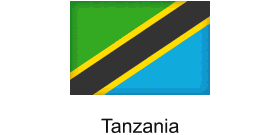 Visit Uluguru for Real Cultural Tourism Attractions
Visit Uluguru for Real Cultural Tourism Attractions
VERY few people might be having the precise history of the Luguru people, who were periodically raided for slaves by a man named Kisabengo, who founded a fortified village where caravans stopped for supplies and obtained porters; first called Simbamwene, this became the town of Morogoro, which is an important trade centre in modern Tanzania.
Driving to the town, approximately 3-4 hours' drive west of Dar Es Salaam, it is also easily accessible from Mikumi (1 hour drive), Udzungwa (2 hours' drive) and Ruaha National Parks (4 hours' drive) and Nyerere National Park (5 hours' drive), you will not regret to visit the famous Choma, Kinole, Maasai and Madola villages for your cultural tourism.
In promoting tourism in the Southern Tanzania known as "Southern Circuit" and contribute to the diversification of livelihoods in selected communities and historical sites around Uluguru Mountains, Mikumi and Udzungwa mountains, you will find time to have firsthand information and watch spectacular and wildlife: Bird Watching; Lupanga Peak; Bondwa Peak; Morning Side; Mikumi National Park and Ruaha National Park, waterfalls, flowers, cultural attractions and enjoy a traditional barbecue (mshikaki) plenty in the villages.
'Daily News' got concerned on this Morning Side, an old now unused colonial German settlement that has existed for more than 100 years old, whose trek via Towelo and Ruvuma villages up the hill exposed panoramic view of the farming land feeding Morogoro city, with a population of 986,678 (2020 census).
With other local journalists from different Media Houses and on the way meeting fellow Tanzanians promoting local tourism, the 3 hours walk oneway to the Morning Side (built in 1911) was spectacular and best viewpoint of Morogoro town.
This perhaps, might attempt one to ask, what is cultural tourism? According to Chilunga Cultural Tourism Program Guide, Godwin Mkunda-it is a type of tourism activity in which the visitor's essential motivation is to learn, discover, experience and consume the tangible and intangible cultural attractions/ products in a tourism destination.
"Cultural tourism is important for many reasons. Perhaps the most prominent reason is the social impact that it brings. Cultural tourism can help reinforce identities, enhance cross cultural understanding and preserve the heritage and culture of an area. "Tourism has always been a booming sector across the globe. No matter where you live, there will always be a group of people, big or small, who want to visit your home country. Therefore, tourism is a very important aspect not only for Tanzania's economy but also their global standing.
"Governments use domestic tourism as a tool to eliminate local poverty, generate employment and economic growth, upgrade infrastructure and alleviate pressure from overcrowding through, for instance, discretionary pricing policies and the provision of non-wage tourism benefits," he would say.
Shedding light on the inhabitants- the Waluguru people, who live in Choma village, he said a unique thing with them unlike many African communities is that they are a matriarchal society. "After marriage a man must move to his wife's land, while matters concerning their children will be handled by the uncles.
The Waluguru people are farmers producing vegetables such as cabbages, carrots lettuce, pumpkins, cassava, yams, beetroot and mchicha (a green vegetable).
They also grow fruits, including mangos, bananas, strawberry, blackberry, raspberries, jack fruit and soursop and other products such as corn/maize and beans. "The Waluguru have a rich culture, and come together to celebrate weddings and special occasion like kunema mwali (when young girls become women), but generally they are welcoming.
"The Chilunga Cultural Tourism programme can take you to meet the Waluguru and experience their hospitality, sample their tradition food and see their pot and mat making skills. You may even get a chance to share a cultural talk over lunch as you enjoy a picnic to the waterfalls," he added. Here, there were several tourists from Germany and other countries taking their cultural tourism to temporarily live right into the villages with the locals, eat their traditional foodstuffs, prepare domestic, plait hair and practice mat weaving, a practice many extolled and promised to take back to their home countries.
In the Southern Circuit, you will find several Maasai villages locally known as Manyattas-the last surviving traditional cultures on Earth.
The Maasai people, one of the well-known tribes are recognized for their unique and ancient rituals, attire and beliefs.
But they are slowly modernizing, and more and younger members are leaving their homelands and traditions for life in the city. The Maasai are Nilotic ethnic group inhabiting northern, central and southern Kenya and Tanzania.
They are among the best known local populations internationally due to their residence near many game parks of Africa's Great Lake, and their distinctive customs and dress. They speak Maasai language and Swahili but also nowadays mostly of Maasai are going to school so they can speak English and other foreign languages.
The Tanzania and Kenya governments have instituted programs to encourage the Maasai to abandon their traditional seminomadic lifestyle, but the people have continued their age-old customs.
Before retiring for a rest, the entourage visited the Udzungwa National Park, widely known for its unique collection of flora and fauna, which is the country's 30- 40% of the countries plant and mammal species.
